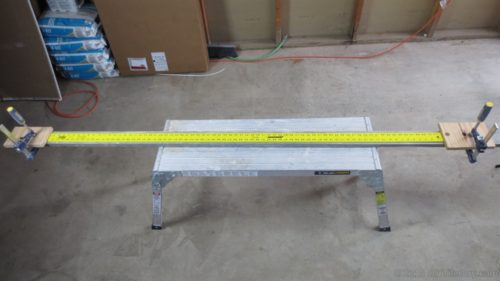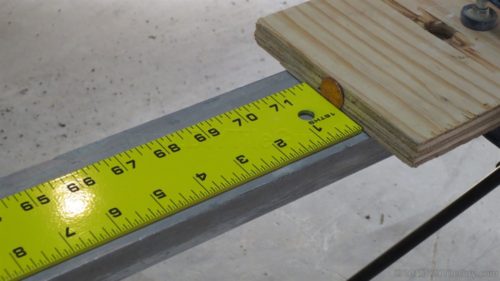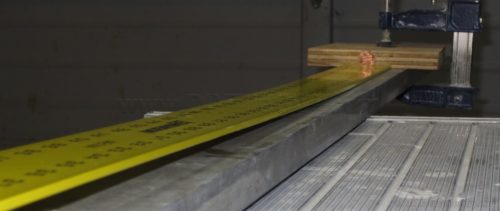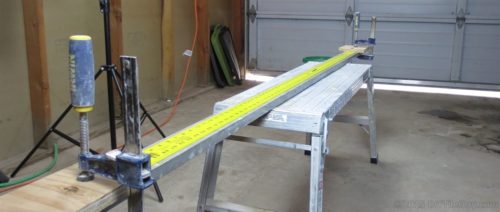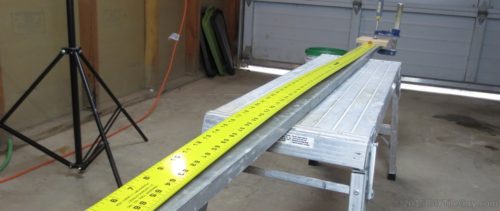Loose floor tiles can be very frustrating. Why is it happening? What’s the cause? What went wrong?
I have a textbook for contractors called the NTCA Reference manual.
One of the features of this book is that it has tables and charts that list different tile problems. Then it gives a cause. Then a solution. It’s a great book.
Estimated reading time: 5 minutes
There are many causes of loose floor tiles
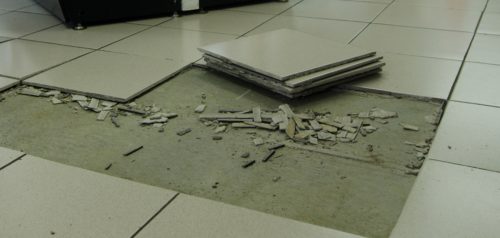
In there, I looked up loose tile and I counted no less than 30 different causes listed in this book. Some examples:
- dirty substrates
- thinset not mixed correctly
- thinset skinned over
- not enough thinset
- wrong kind of thinset
- too much deflection in the floor
- and on and on…
These are common causes that people point to when dealing with loose tile on their floor. Any one of them could be the culprit.
But I want to talk about a cause that isn’t talked about as much but it’s more common than you may think. The cause being not enough movement.
“Wait a second! Not enough movement?” I can hear already. “If my tiles are loose doesn’t that mean they moved too much?”
Hear me out on this.
Not Enough Movement
There are different kinds of forces that can put stress on a tile installation. Your floor can move up and down. This is known as deflection.
Floors can move and expand at different rates. For instance, according to the Ditra Handbook, concrete can move nearly twice the rate that tile moves.
Also, the tiles themselves can fluctuate in size. The technical term is Thermal Expansion. As the temperature heats up the tiles expand. It’s not much.
But if you get a whole kitchen floor of tiles that all grow very slightly bigger then it doesn’t have to be very much. Things get crowded in a hurry. For example:
Warning: Boring technical calculations ahead! (move down to the next subheading to skip this section)
Temperature Fluctuations
It’s my understanding that if the temperature of a tile varies by about 35 degrees Fahrenheit that a 12×12 tile can “grow” 1/100th (0.01) inches. So how much does 1/100th of an inch matter?
One tile at 1/100th of an inch larger probably doesn’t matter. But over the course of an entire tile floor? It starts to matter.
Say the temperature is 50 degrees in the morning and heats up to 85 in the afternoon. A pretty common scenario.
Let’s say that you have six tiles in a row with cement grout in between the joints. Each tile is 1/100th of an inch bigger in the afternoon than it was in the morning.
Now let’s say that those six tiles grow a combined 6/100th (0.06) of an inch. 6/100ths if nearly 1/16 inch. Is 1/16th of an inch a big deal?
Demonstrating Movement in tile
In the photo below I have a six-foot metal ruler. The six-foot ruler is sitting flat in between two blocks.
Let’s pretend that the ruler is actually six 12 inch tiles in a row with grout in between the grout lines.
Now, what happens when those tiles grow 1/100th inch each? This US penny is nearly 1/16th of an inch. (0.06 inches according to Google).
With no room to move the middle of the ruler rises.
When tile does this it’s referred to as “tenting”.
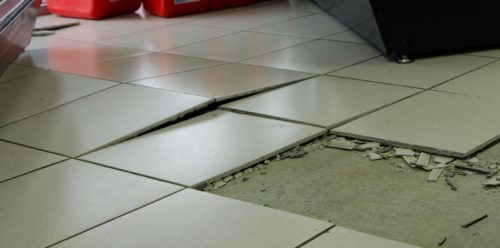
But I have loose floor tiles not tenting floor tiles
Now you might say “I may have loose floor tiles but they are definitely not tenting.”
Well, what happens when your tile moves some but not to the extreme of making a tent shape? What if they just move a tiny amount? Maybe just enough to come loose? Maybe enough to sound hollow underneath?
Now I’m not saying that your loose floor tiles are definitely caused by not being able to move. But it’s a cause that isn’t talked about a lot. Without allowing for movement your tile is likely to fail.
What can I do about my loose floor tiles?
If you are frustrated with your floor tiles coming loose and want to know how and where to allow for movement, please read this next post:
The One Thing Every Tile Installation Needs: Movement Joints
